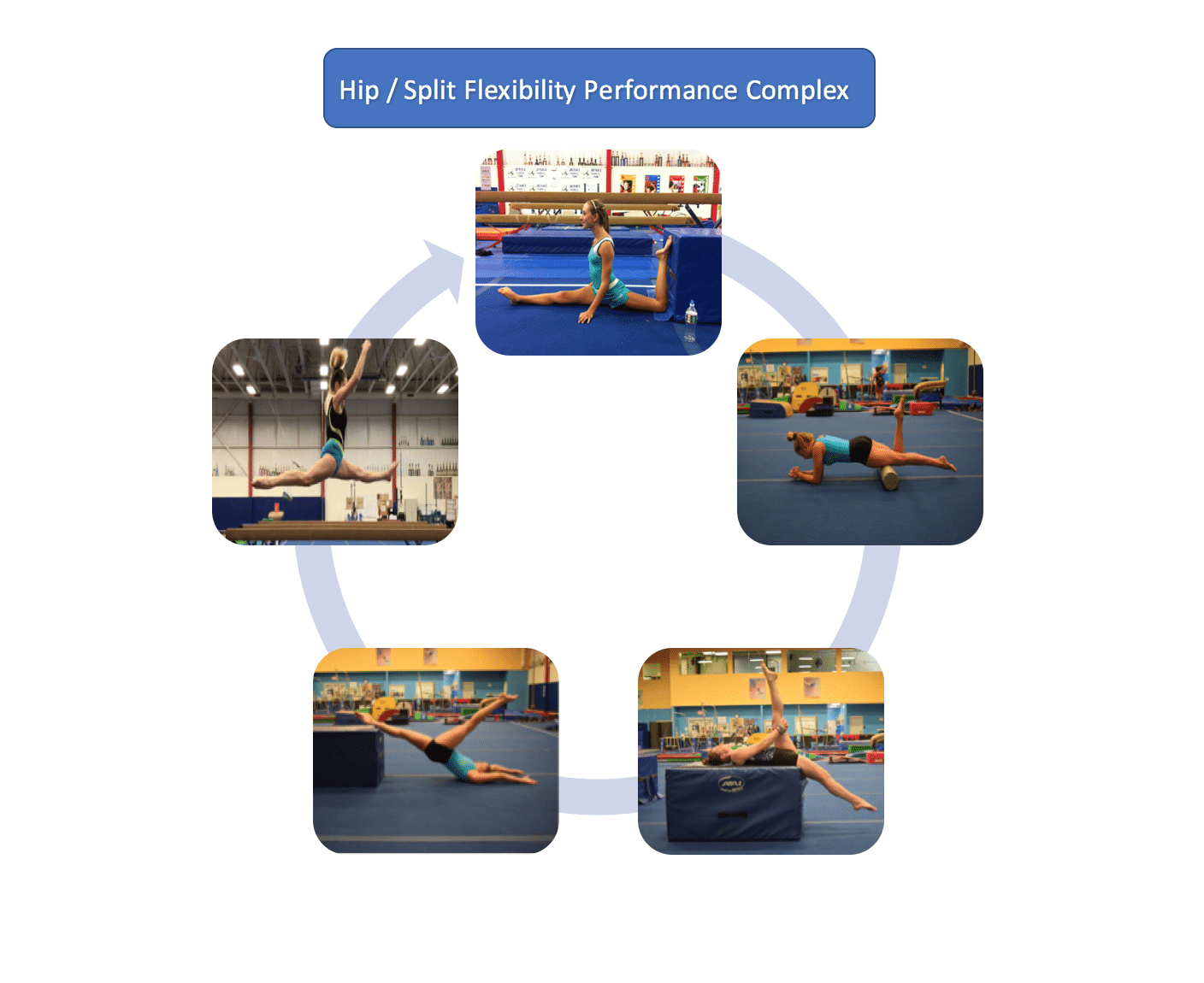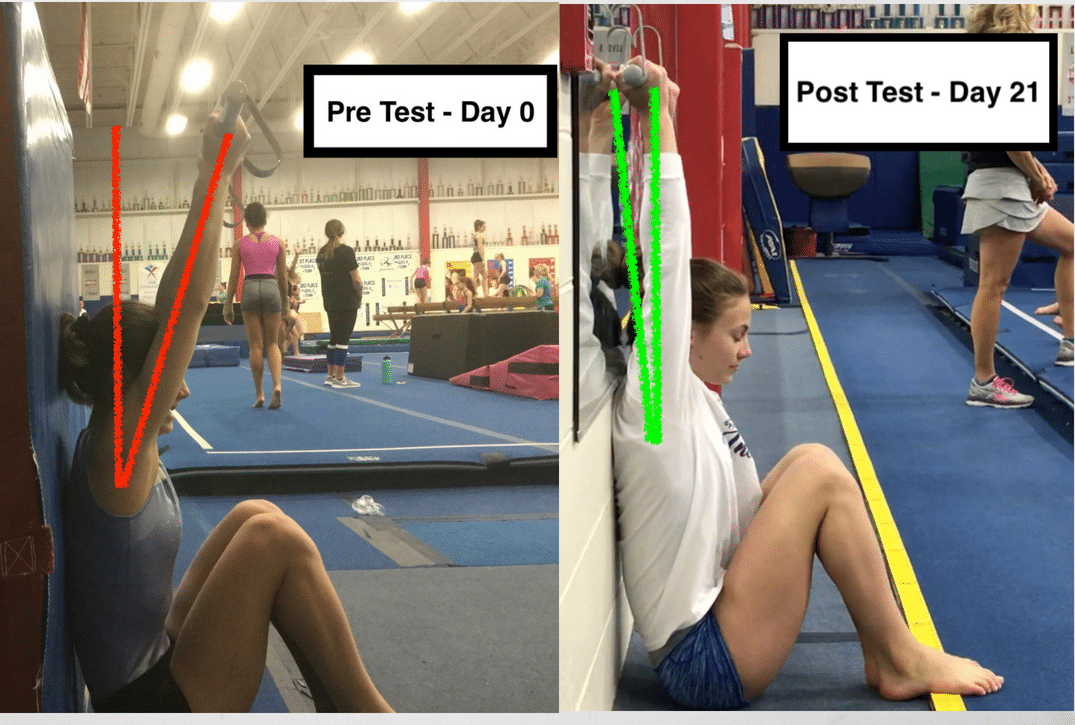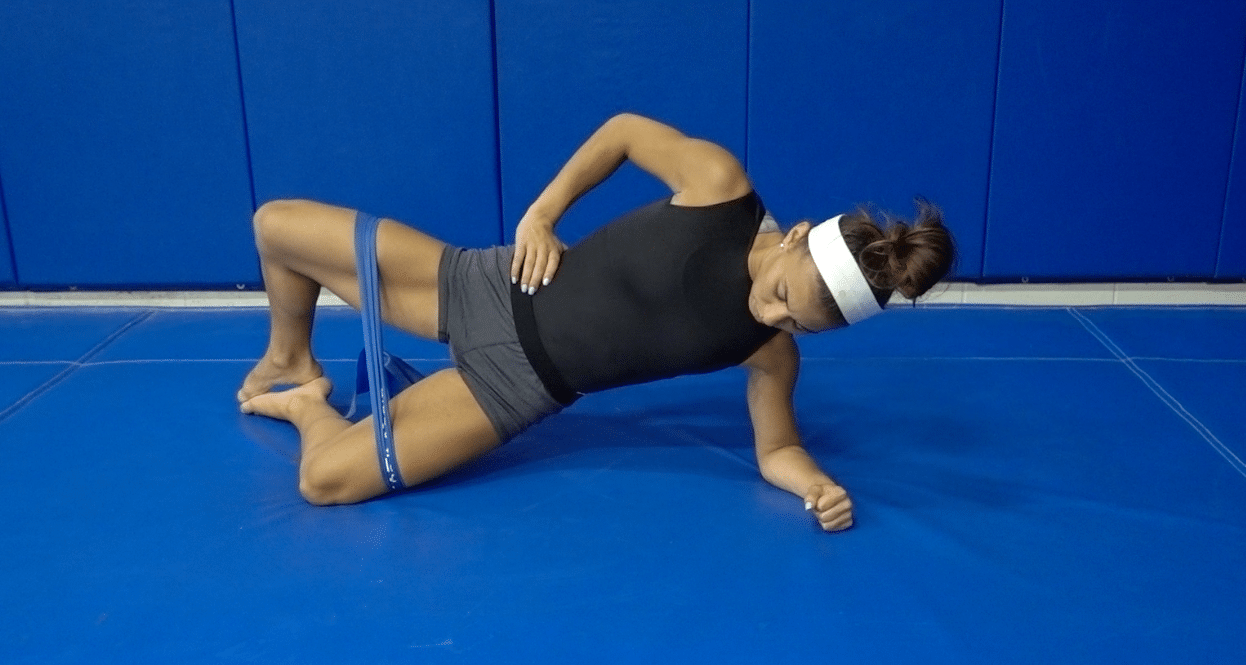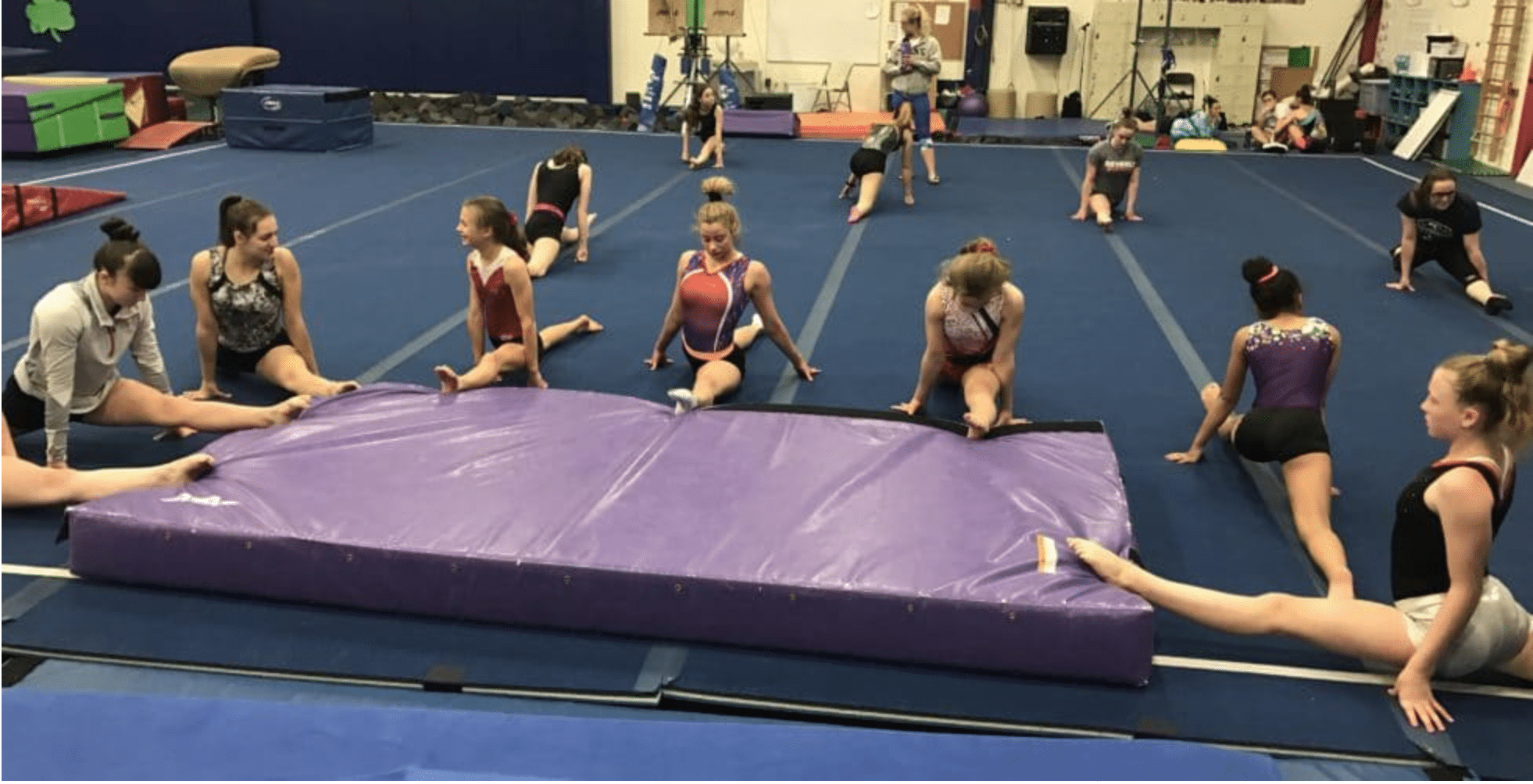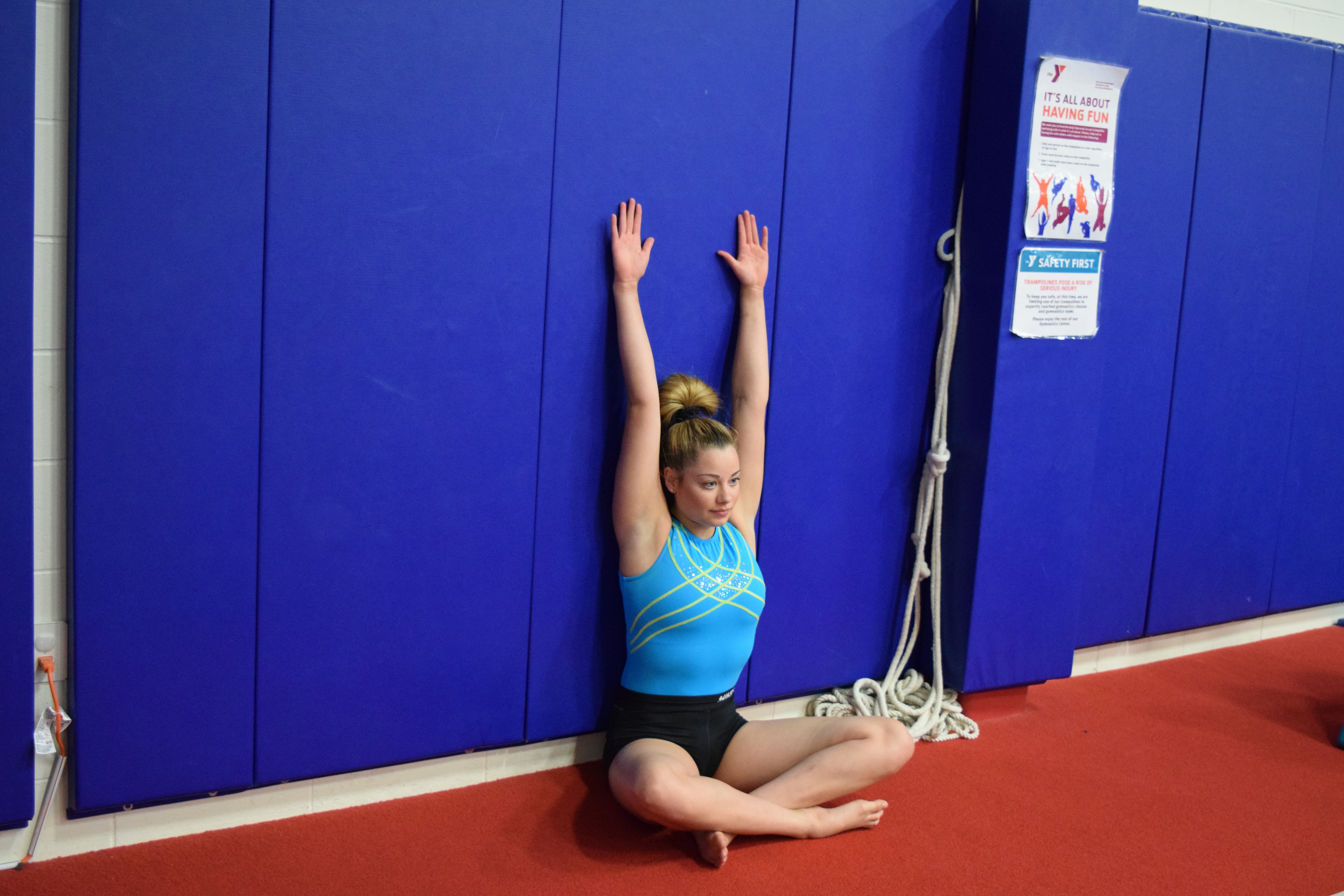Increase Split Flexibility with My Favorite Complex, and The #1 Reason Gymnasts Struggle with Flexibility
The most common topic coaches, parents, and medical providers contact me about is what to do for gymnasts who struggle with Split/Leap, Handstand, and Bridge Flexibility. It’s well known that the flexibility for these basic gymnastics skills is essential for long term success and reduced injury risk. Unfortunately, many of the people who contact me say that despite their best efforts, the gymnasts they work with still have tight shoulders, hips, and struggle with skills. This is especially true for split or leap flexibility, which many times links to high lower back pain rates as the lower back over arches to make up for limited hip flexibility.
I have been fortunate to work with hundreds of gymnasts in the last few years for both performance enhancement and injury rehabilitation. By spending many hours reading research articles, trying new ideas, and treating gymnasts at Champion Physical Therapy, I have been able to really narrow in on what structures bottle neck many gymnasts to limited split flexibility gains. However, the biggest thing people miss isn’t a muscle or a certain stretch.
Table of Contents
The “one thing” a gymnast needs to improve their flexibility isn’t a magic bullet exercise or drill. It’s a movement assessment.
The key here is that without a proper movement assessment, we may completely miss the boat on the real underlying issue for splits, handstands, bridges, and so on. Anyone working with gymnasts needs to know what body structures are not good targets for flexibility work (boney alignment, ligaments or joints) and what structures are (muscle stiffness, high muscle tone from overuse). Once a gymnast goes through a full movement assessment from a qualified person that identifies the underlying issues, it is much easier and way less overwhelming to see positive progress in skills involving splits and handstands.
We must understand some basic anatomy and first screening a gymnast for these possible causes through movement assessments. Without this, it may lead to limited progress despite the most dedicated or in depth flexibility program being done every day.
Worse than limited progress, it may cause a gymnast to lose their flexibility or get hurt over time. I sadly see this very often treating gymnastics patients for hip and back injuries. To help explain this idea more here is a 3-minute video clip our upcoming course “Keys to Developing Flexibility and Strength for Gymnastics” that launches Monday March 6th.
.
Download My Favorite Split Flexibility Complex Based On This Approach
.
A huge goal of mine is to help gymnastics not have so many headaches around split flexibility and hip/back injuries. Based off doing many gymnastics movement assessments, I have created a general split flexibility complex that cycles through flexibility exercises, control, and gymnastics drills for the most common issues that limit splits. It targets all structures that we can (and want to) change. I have found it really effective when implemented correctly and used regularly.
Due to this information being so important for gymnastics, as a special offer I will be giving readers a video and PDF download of the Split Flexibility Complex I mentioned above that is part of our online course. To access the video walk through and PDF worksheet with pictures, sign up for the SHIFT Newsletter below.
Download SHIFT's Free Gymnastics Pre-Hab Guide
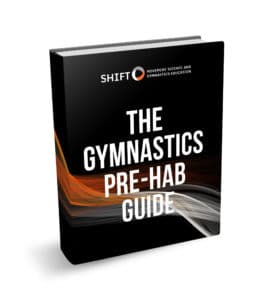
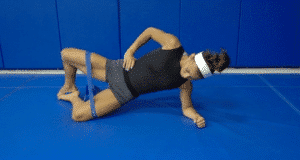
Daily soft tissue and activation exercises
Specific 2x/week Circuits for Male and Female Gymnasts
Descriptions, Exercise Videos, and Downloadable Checklists

.
Transform Your Approach to Flexibility Training
I personally feel getting full splits or overhead shoulder flexibility doesn’t have to include painfully pushing gymnasts down during stretching, yanking on their arms or legs, or making them sit in splits for 10 minutes with weights pulling them. As a whole, all of us in gymnastics need to work smarter, not harder when it comes to flexibility. I think this will get us the flexibility we want for skills to raise scores, while also drastically reducing the injury rates in gymnastics.
Myself, many other coaches, and many medical providers have been able to make progress without needed these extreme flexibility approaches often seen in gymnastics. The good news is, I have been working like crazy with my friend Rupert Egan to create a course where anyone in gymnastics can learn how, on Monday March 6th it will officially be launching to the public, so mark your calendars and do not miss out! I promise it will blow you away.
As a final note, I will admit there are caveats for people born with unique anatomy, or who have specific medical circumstances. Along with this, changes won’t magically stick around forever. That will take consistency, some hard work, and proper training.
That being said there are huge gains in flexibility that can be accessed for many gymnasts. All you need to do is invest in learning about what the current research supports for these ideas, and how to quickly implement them during gymnastics training. Hope this helps shed some light on this topic. Thanks for reading, and have a great day!
– Dave Tilley DPT, SCS
References
- Hodges, P. Spinal Control: The Rehabilitation of Back Pain: State of the Art and Science, 1e. Churchhill Livingstone 2015
- McGill, S. Lower Back Disorders . Second Edition. Human Kinetics, 2007
- McGill, S. Ultimate Back Fitness and Performance: Fifth Edition. BackFitpro, Inc. 2014
- Rain man, Thornburg. Clinical Examination and Physical Assessment of Hip Related Joint pain In Athletes. ISJPT 9(6) 2014
- Alistair MM, Saran MR. Micro instability of the hip—it does exist etiology, diagnosis and treatment . Journal of Hip Preservation Surgery Vol. 0, No. 0, pp. 1–13 224
- Draovitch P, Edelstein J, KellyBT. The Layer Concept, Determing the Pain Generators, Pathology, and How Structure Determines Treatment. Cur Rev Musculoskelet Med. 2012 Mar;5(1):18. doi: 10.1007/s1217801191058.
- Weber AE, Bedi A, Tibor LM, Zaltz I, Larson CM. The Hyper exible Hip: Managing Hip Pain in the Dancer and Gymnast. Sports Health. 2015 Jul;7(4):34658
- Shu B., Safran MR. Hip Instability: Anatomic and Clinical Considerations of Traumatic and Atraumatic Instability. Clin Sports Med 30 (2011) 349–367
- Huang R, Diaz C, Parvizi J. Acetabular Labral Tears: Focused Review of Anatomy, Diagnosis, and Current Management . Phys Sportsmed. 2012 May;40(2):8793. doi: 10.3810/psm.2012.05.1968.
- Meyers CA., et al. Role of the Acetabular Labrum and the Iliofemoral Ligament in Hip Stability: An In Vitro Biplane Fluoroscopy Study. Am J Sports Med 2011 39: 85S
- Cynthia H.w., Magnusson P., Increasing Muscle Extensibility: A Matter of Increasing Length or Modifying Sensation? PHYS THER. 2010; 90:438449.
- Beardsley C, Jakob Š, E ects of SelfMyofascial Release: A Systematic Review. Journal of Bodywork & Movement Therapies. (2015), doi: 10.1016/j.jbmt.2015.08.007.
- Beardsley Chris. Foam rolling and selfmyofascial release. Review published online and accessible here http://www.strengthandconditioningresearch.com/foamrollingselfmyofascialreleas e/
- Ben M, Harvey LA. Regular stretch does not increase muscle extensibility: A randomized controlled trial. S cand J Med Sci Sports. 2010;20(1):136144. doi: 10.1111/j.1600- 0838.2009.00926.x.
- Schleip, R. Fascial Plasticity: A New Neurobiological Explanation: Part 1. Journal of Bodywork and Movement Therapies, 2004.
- Bialosky,etal. The Mechanisms of Manual Therapy in the Treatment of Musculoskeletal Pain: A Comprehensive Model. Man Therapy 2009. Oct 4 (15) 226 Chaundry H, et al. T hreeDimensional Mathematical Model for Deformation of Human Fasciae in Manual Therapy. J Am Osteopath Assoc. 2008;108:379390

